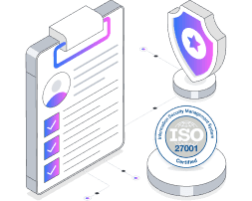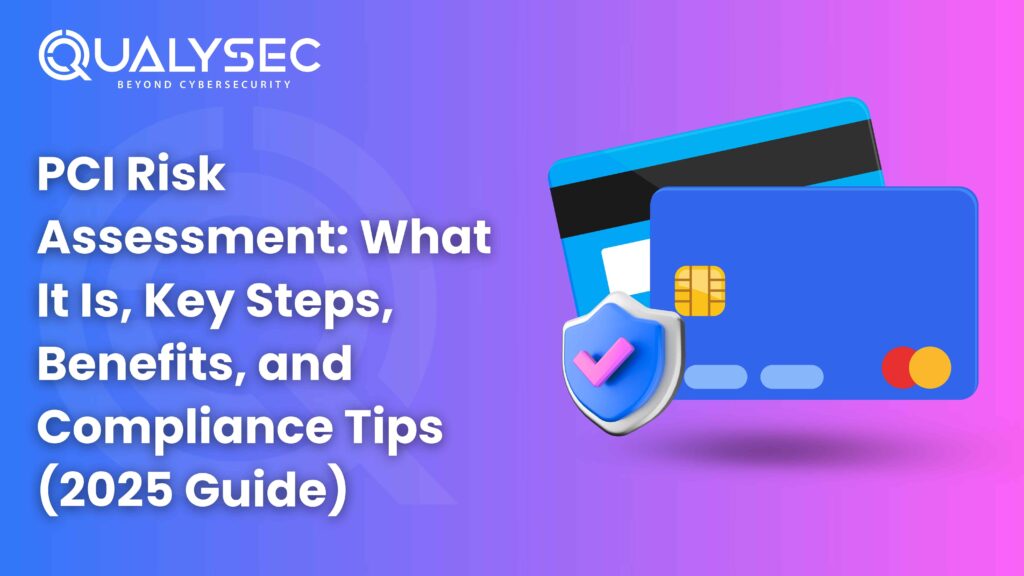PCI Risk Assessment: What It Is, Key Steps, Benefits, and Compliance Tips (2025 Guide)
Using payment cards is now normal in most transactions, but fraudsters still choose them as a favorite way to steal information. Payment card data was found to have been the focus of breaches in 25% of the incidents reported by the 2024 Verizon Data Breach Investigations Report. The data concerning risk of cardholder information applies directly to those enterprises that store, process or transmit payment card details. PCI DSS is set up to ensure the safety of this personal information. Agreeing with PCI DSS isn’t limited to fulfilling recommendations made by auditors. You need to follow a scheduled and constant process for identifying and managing risks. To start, a PCI risk assessment is required. A PCI risk assessment plays a role in protecting organizations: Poor attention to this process puts your firm at risk of facing losses, facing legal action, suffering damage to its reputation and being suspended from payment systems. In this blog, we will look at what’s involved in a PCI risk assessment, walk you through its important steps, help you see its business value and give practical advice for following PCI DSS v4.0 in 2025. What is a PCI Risk Assessment? A PCI risk assessment is a planned process that helps companies find, evaluate and order security risks linked to their CDE. As the main part of Requirement 12.2 of PCI DSS, it provides the basis for all security measures with payment card data involved in a system. It isn’t only meant to realize what risks already exist. Its purpose is to help organizations predict risks, evaluate their influence and plan responses to stop them from causing a data breach. What Does It Involve? PCI standard risk assessment includes the following items: Why It Differs from General Risk Assessments General IT risk assessments consider all aspects of information systems, PCI-specific assessments look only at information related to payments. Integration of children’s development with economic development is quite narrow, but very significant. Thanks to this concentrated focus, businesses ensure their efforts meet PCI DSS requirements, while keeping audits clear. PCI DSS v4.0 requires that organizations must do the following: If a PCI risk assessment model is not followed, this leads to more issues and also makes your organization risk audit failure. Why Is PCI Risk Assessment Crucial for Businesses? For any organization that handles cardholder data, a PCI risk assessment is not just a best practice. It is an operational necessity. Without it, businesses risk violating compliance standards, exposing sensitive information, and facing costly disruptions. Here are the primary reasons PCI risk assessment should be prioritized: 1. Ensures PCI DSS Compliance PCI DSS Requirement 12.2 makes risk assessment mandatory for all entities that process or store cardholder data. Skipping this step can result in: A well-documented risk assessment also makes audits faster, smoother, and more defensible. 2. Detects Vulnerabilities Before Attackers Do An effective PCI risk assessment goes beyond basic scanning. It helps identify vulnerabilities in: If these gaps are noticed early, businesses are able to focus on resolving them before new risks appear. 3. Reduces the Financial Impact of a Data Breach From the most recent Data Breach report, we discover that on average, businesses must pay $4.45 million for a data breach and in retail and finance, those that process card payments suffer losses of over $3 million each time. These charges make up the following amounts: Evaluating your payment systems through a PCI risk assessment decreases your chance of experiencing a data breach and limits the damages if one occurs. 4. Strengthens Business Continuity and Resilience By evaluating the systems, you can be sure that backups, recovery systems and security measures are all working properly. Thanks to this approach, you can keep your business running smoothly through security events. 5. Builds Trust with Customers and Partners Customers and vendors are more likely to work with organizations that can demonstrate strong data protection protocols. Regular PCI risk assessments: PCI DSS Risk Assessment Steps A successful risk assessment focuses on the Cardholder Data Environment’s (CDE) scope and organizational details. These are the top steps needed for doing a PCI risk assessment successfully: 1. Scope Identification To begin, you need to outline where the assessment is supposed to take place. The purpose is to see every system, network, application, service and endpoint involved in managing or sharing cardholder details. What to include: Tip: Misidentifying or underestimating scope is one of the most common causes of non-compliance during audits. 2. Threat Identification Once the scope is clear, the next step is to assess what could go wrong. Threats may be internal or external, technical or human. Examples of threats: Understanding these threats helps you build a realistic threat model tailored to your environment. 3. Vulnerability Assessment When risks are identified, the next action is to assess which areas of the system face the highest risk. Techniques used: QualySec team uses OWASP Top 10, SANS Top 25 and known CVEs to lead their analysis. It allows for the identification of often used weaknesses so they are fixed ahead of possible abuse. 4. Risk Rating and Prioritization Experts rate every risk by considering how much it could impact the organization if it is used by attackers. Factors to consider: By sorting risks as low, medium, high or critical on a risk matrix, security teams can decide on the best action and use their time wisely. 5. Mitigation and Control Planning Once the risks are rated, develop a remediation plan that addresses each one with the appropriate control. Examples of mitigation strategies: Each mitigation strategy should have a timeline, responsible team, and defined outcome. 6. Ongoing Monitoring and Documentation A PCI risk assessment is not a one-time event. Organizations must: Maintaining clear documentation not only prepares you for compliance audits but also builds accountability across teams. Benefits of PCI Risk Assessment Performing a PCI risk assessment is more than simply reaching compliance obligations. Doing this strengthens both your company’s security and its ability to continue working smoothly. Here are the key




